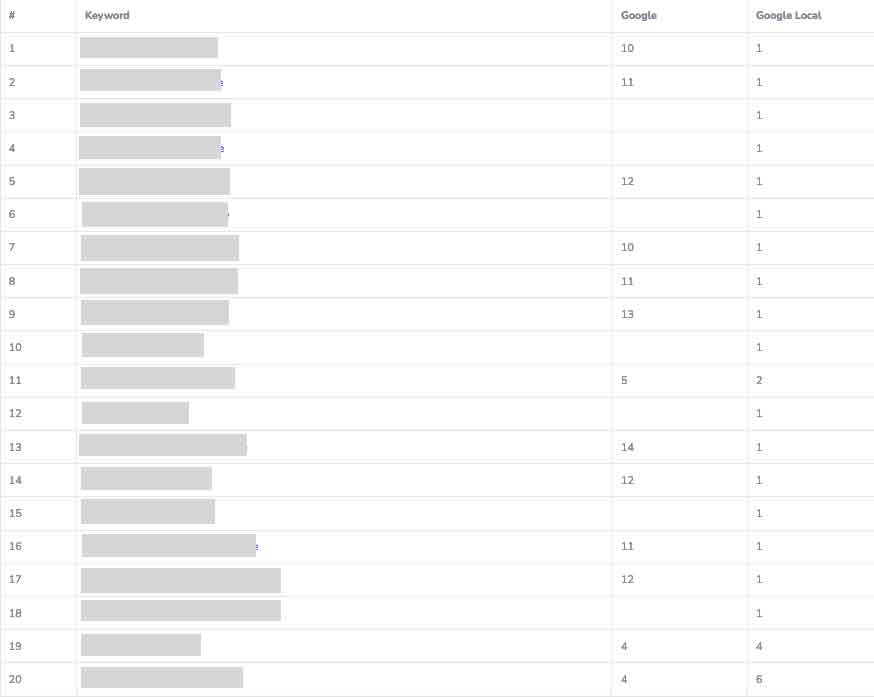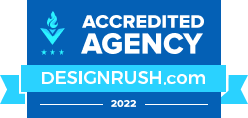In this case study, we explore effective strategies that propelled a local health and wellness business to the first page of search results for all targeted keywords. We dive into tactical SEO practices and data-driven decisions crucial in outperforming competitors within specific geographic locales. With a focus on optimizing both on-page elements and off-site signals, our holistic approach showcases tangible improvements in online visibility.
This analysis serves as evidence of well-executed tactics fostering top rankings amidst fierce digital competition while adhering to the evolving algorithms set by major search engines like Google.
Project Overview and Initial Challenges
For this project, the goal was clear: hit first-page rankings locally for every key term we targeted. We faced tough competition from well-established names right off the bat. Our two decades in SEO told us this wouldn’t be easy or quick. It demanded a smart strategy and hard work.
The client’s site had issues – slow load times hurt user experience big time. Outdated stats and dull info didn’t engage visitors much at all. That needed to change fast if we wanted to climb those search engine ranks. We began by overhauling their website structure and simplifying user navigation. This also improved the crawler’s comprehension of the site hierarchy, which is crucial for SEO.
Selecting Target Keywords
When picking keywords, we focus on terms that individuals likely type when they look. We used our proprietary tools to spot words with good search numbers but not too much fight from others. It was like finding sweet spots – places where many people go and yet we could still stand out.
We then checked to see if these words match our goals. We used a mix of broad and specific phrases. This balance brought us both quick wins and long fights for top ranks within reach.
What Did We Do
In tackling the website’s SEO, we first scrutinized its structure. We made sure each page loaded fast and was easy to use on all devices. We then crafted clear meta descriptions that matched search intents closely with what our site offers.
Also vital were local signals like NAP: name, address, and phone number, ensuring they stayed consistent across online listings for trust-building with both users and search engines alike. Our team focused next on robust content creation. This meant regular blog posts relevant to our audience’s needs, content designed not just for robots but for real people seeking answers or services we provide. Every piece echoed the keywords without stuffing them unnaturally into text blocks or titles.
Lastly, customer reviews played a significant role. They added fresh user-generated content regularly which helped boost relevance in local searches greatly.
Optimizing Content for the Target Keywords
In optimizing content, we picked words that most people search for. First, we listed them. Think of what someone might type on Google to find a service or item we offer. Then, in the ur articles and site pages, we inserted these words where they fit best: titles, headers, and first paragraphs were key spots.
Our goal was to make it clear that the respective page has the answers people need. We sprinkled these keywords through the text but kept it natural, as overdoing could hurt us more than help! We also updated old posts with fresh info. This ensured everything kept up with new trends or changes.
Off-Page SEO Tactics to Enhance the Website’s Authority
We reached out to respected sites, asking them to feature our content. This earned us backlinks that were like gold in Google’s eyes. They raised our domain authority (DA).
High DA means trust. It’s a nod from the big guys of the web saying we’re legit. We made sure these weren’t just any links but quality ones from industry-related websites with their own high standings. It told search engines we played in the same league and shared valuable info people want – a clear signal for better rankings.
We also engage on social platforms because every share or mention counts as an endorsement, the kind search engines can’t ignore when they decide who stands out.
Optimizing Site for Better Search Engine Visibility
First, we ensured meta tags were clear and included key terms people use when they look online. Every image had alt text that describes what is in the picture. This helps those who can’t see images well and improves our standings with search engines.
We kept the URLs short while still telling what to expect on the page. Long addresses confuse individuals just as much as machines. Page speed matters, too. If your site takes ages to load, visitors will leave quickly before reading anything we worked hard on! Our strategy also leaned heavily into mobile optimization to make sure the website worked smoothly across all devices. Finally, updating old pages kept them fresh for new eyes.
Utilizing Google My Business Optimally
To fully harness Google My Business (GMB), you must keep your profile updated. This meant precise business hours, contact info, and services offered. We made sure to respond promptly to reviews. This showed potential customers that we valued feedback good or bad.
We used the post feature regularly too. It gave insights into promotions or events at our location which boosted engagement with local searchers. Photos helped as well.
Link Building for Local Dominance
In our strategy, we focused on creating high-quality links from local websites. This meant reaching out to nearby businesses and community portals for backlinks that signal relevance to our area. We also submitted the site to trusted local directories, making sure information was consistent across all listings; this consistency boosts trust with search engines like Google.
To gauge effectiveness, we monitored rankings weekly. We noticed a clear correlation between new local backlinks acquired and improved positioning in search results over a three-month span. With each quality link gained, closer we moved to the top spot – evidence of successful targeted link-building efforts boosting local online dominance.
Tools & Metrics Used to Measure the SEO Performance
For SEO, tracking progress is key. We gauged success with tools like Google Analytics for traffic trends and user behavior insights. Search Console provided keyword rankings and site errors.
For link analysis, Ahrefs or Majestic came in handy. They showed us which sites linked back to ours, an important ranking factor by search engines’ standards. Conversion rates were a tale-tell sign, too. For page speed checks, we used tools like GTmetrix.
Overcoming Ranking Plateaus
To break through ranking plateaus, first, we assessed our web content quality. It’s key to good user experience and vital for rankings. Content must solve users’ problems simply yet effectively. This meant updating old posts to keep them fresh and relevant.
Also crucial was deep competitor analysis. We looked at the top-ranking pages to learn what they were doing differently and then adapted accordingly. Lastly, we made sure to boost credibility with trustworthy links from respected sites within our niche.
Key Takeaways and Results
We saw big wins across all client keywords, landing on the first page for each one. Our focused strategy increased local search visibility dramatically, leading to a remarkable hike in organic traffic. Most importantly, our work helped build lasting trust with our audience by providing relevant information catered to their needs, which is key for long-term success in any SEO endeavor.
After months of targeted SEO efforts, the results speak for themselves. We secured first-page local rankings for every keyword we aimed at. This triumph not only boosted our client’s visibility but also increased their customer engagement significantly.
The case study reveals a blend of optimized content, strategic keyword use, and robust backlink profiles as key drivers behind this success. These outcomes underscore how tailored strategies can lead to dominant positions in local search landscapes, which is vital for any business looking to stand out online.









